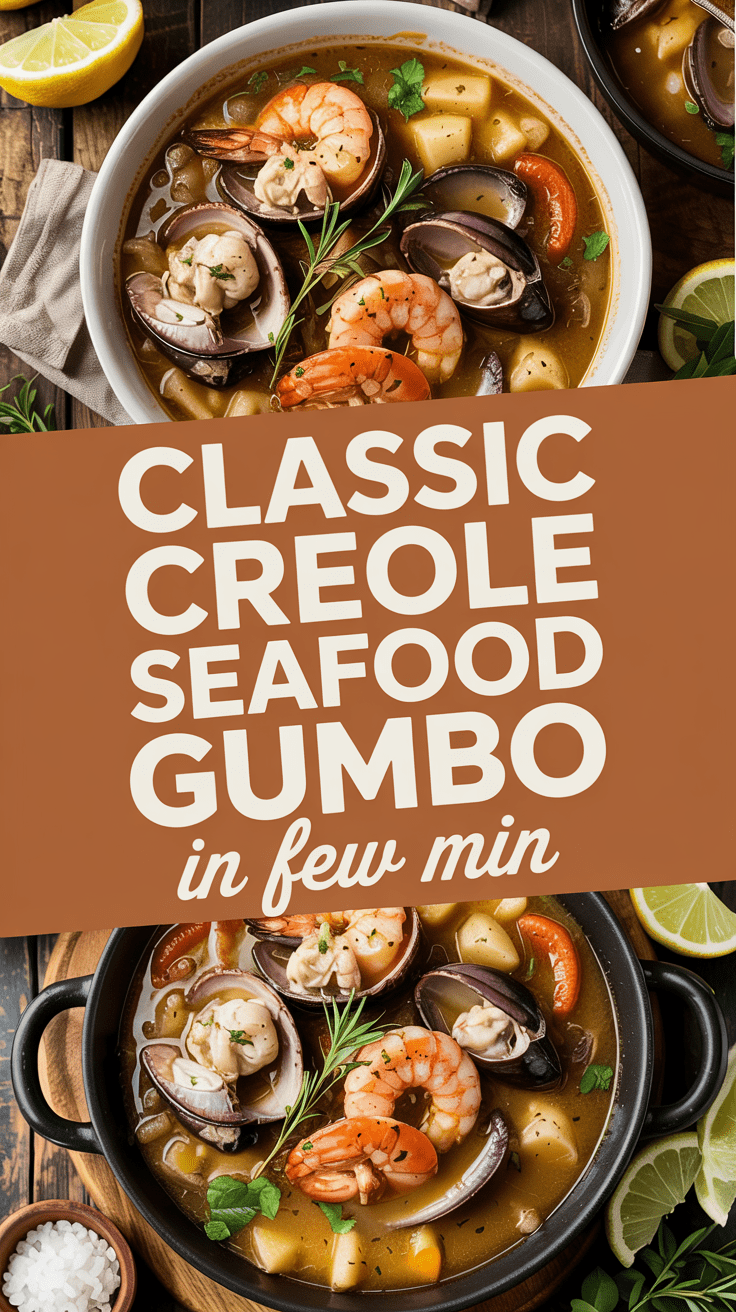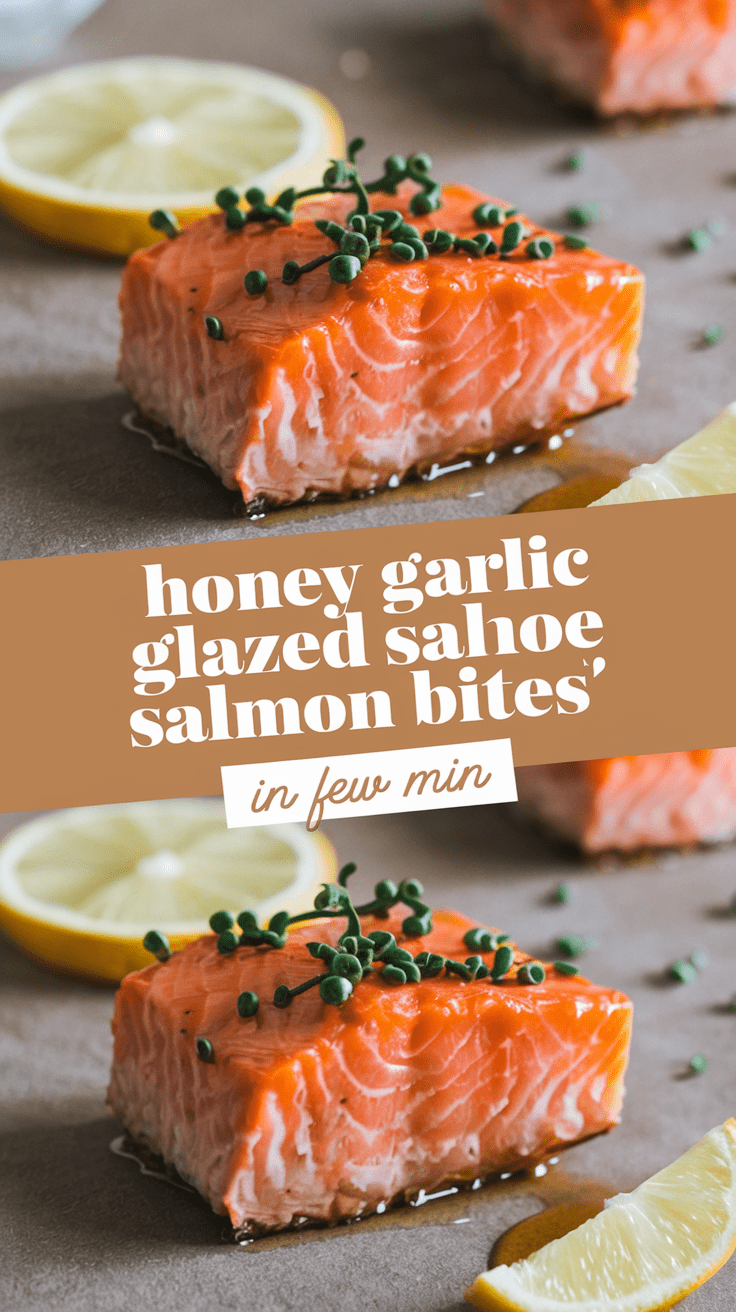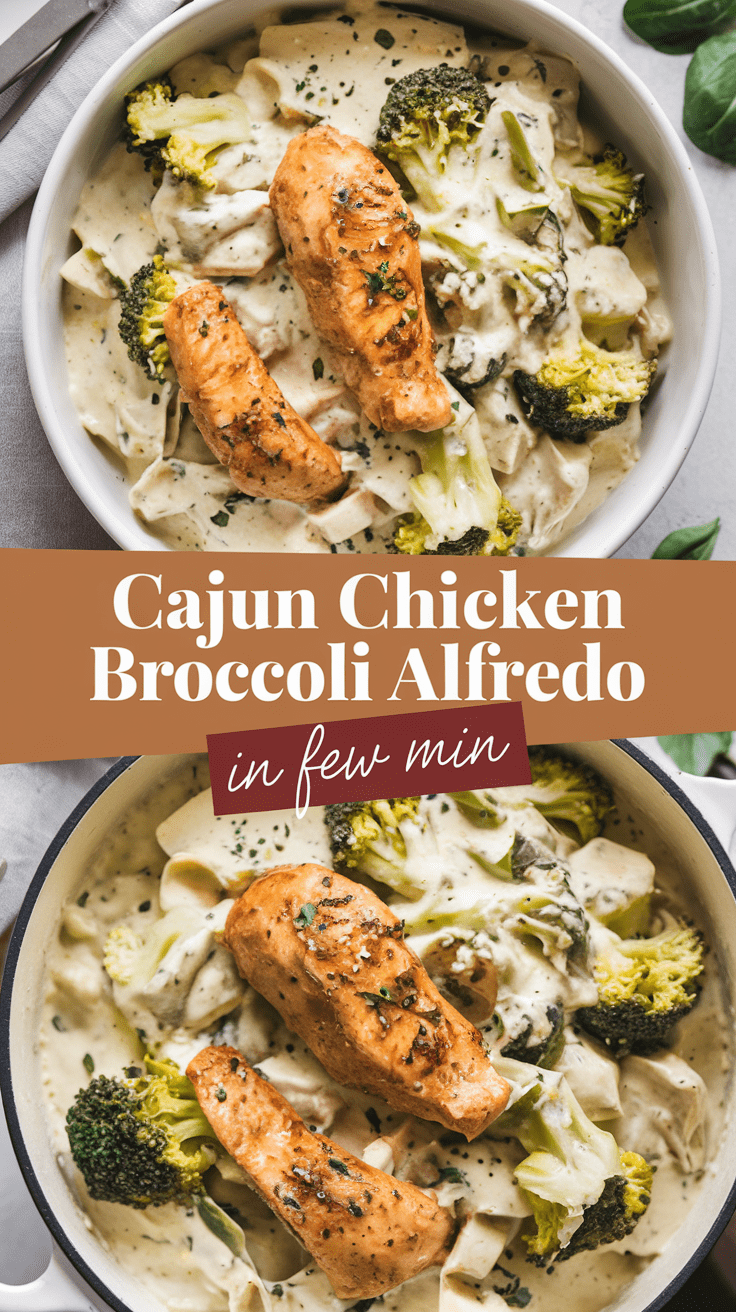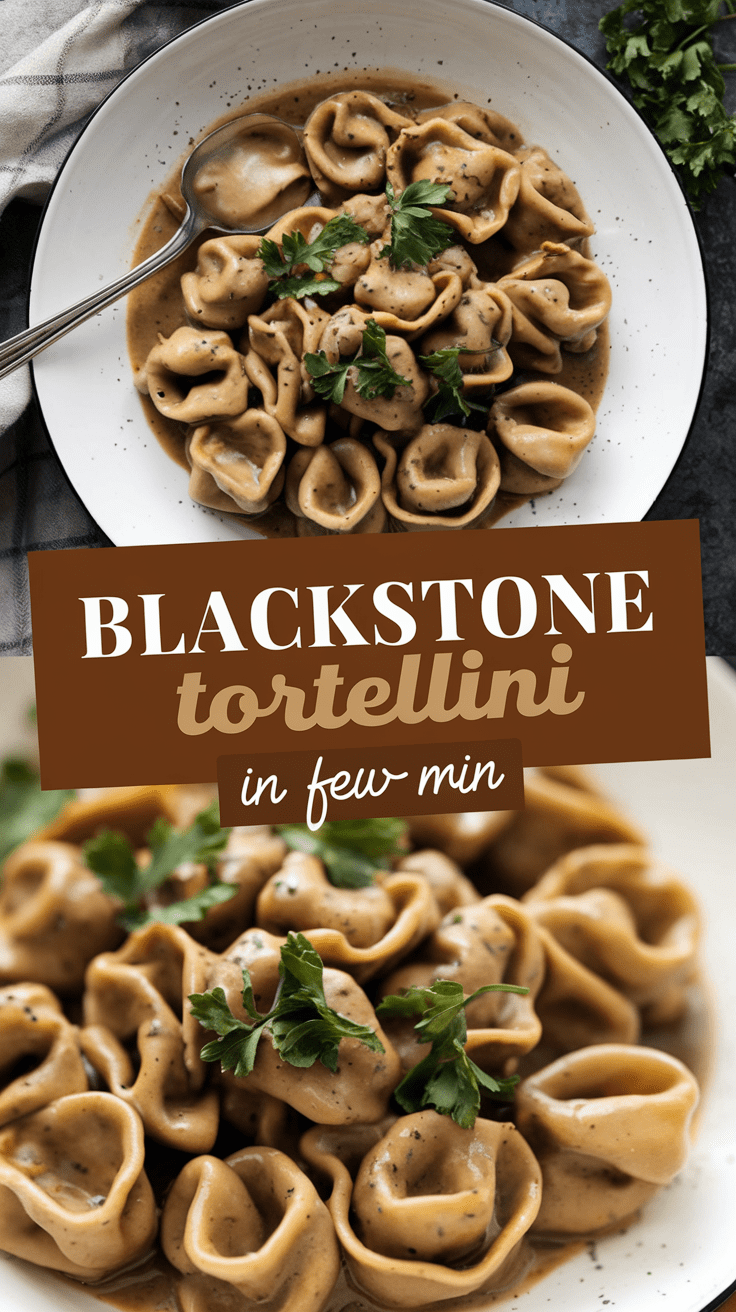Classic Creole Seafood Gumbo

The very sight of a gumbo pot bubbling on the stove gives off strong homely vibes to me. A portion of these smells alone—heavenly roux, spicy sausage, fishy shrimp, and pungent okra—is enough to make the kitchen cozy. Every time I prepare gumbo, I think first to the time I tasted it in New Orleans. It was hot, dark, and lively—a reality of the city bottled and presented through the medium of food. Also, once you make it on your own way, you’ll recognize what I said.
What Is Classic Creole Seafood Gumbo?
Creole Seafood Gumbo is a very substantial stew originating from Louisiana, consisting of many flavors—French, African, and Caribbean all in one dish, and unforgettable at the same time. It is customary to prepare it using a dark roux (flour and fat that are cooked until very brown), the holy trinity of vegetables (onion, celery, and bell pepper), okra, seafood, and spices. The broth gets its ripeness through long-cooking and the building up of flavors in layers that one does as one goes along.
Why This Recipe Is Special
This gumbo stands out because of its multifaceted character as well as its nice, mellow, and soothing feeling. The roux imparts a flavor suggested by nuts with toast as a profile lying underneath, and hence is a main component. The seafood contributes saltiness and sweetness. And the Creole seasoning unifies everything with its warmth and spice. It is that type of dish you would like to make whenever you want to slow down the world around you and create something that embodies love and heritage in one bowl.
Why You’ll Love This Recipe
- Big, bold flavor – Smoky, spicy, savory, and rich all at one.
- Comfort in a bowl – Like a warm hug on a cool evening.
- Perfect for sharing – It’s a crowd-pleaser that beautifully feeds family and friends.
- Make-ahead friendly – The flavor of the gumbo actually deepens overnight.
- Customizable – You can modify the seafood or spice level to make it your own.
Tools You’ll Need
Here’s what I use when I make gumbo and why it matters:
- Large heavy-bottomed pot or Dutch oven – Essential for even cooking and preventing the roux from burning.
- Wooden spoon or heatproof spatula – Ideal for stirring the roux; metal can get too hot.
- Sharp knife & cutting board – You’ll be chopping plenty of veggies.
- Measuring cups and spoons – Accuracy helps, especially for the roux and spices.
- Ladle – For serving those generous, hearty portions.
Ingredients (Serves 6–8)
Roux
- 1 cup (125 g) all-purpose flour
- 1 cup (240 ml) vegetable oil or neutral oil
Vegetables
- 1 large onion, diced
- 1 green bell pepper, diced
- 2 celery stalks, diced
- 4 garlic cloves, minced
- 1 cup (150 g) okra, sliced
Proteins
- 1/2 lb (225 g) andouille sausage, sliced
- 1/2 lb (225 g) shrimp, peeled and deveined
- 1/2 lb (225 g) crab meat (optional but amazing)
- 1/2 lb (225 g) white fish (like snapper or catfish), cut into chunks
Liquids & Seasonings
- 6 cups (1.4 L) seafood stock or chicken stock
- 2 tsp Creole seasoning (store-bought or homemade)
- 1/2 tsp smoked paprika
- 1/4 tsp cayenne pepper (adjust for spice preference)
- 2 bay leaves
- Salt and black pepper, to taste
- 1 tbsp Worcestershire sauce
- 1 tbsp hot sauce (optional but highly recommended)
To Serve
- Cooked white rice
- Chopped parsley and green onions for garnish
Step-by-Step Instructions
1. Make the Roux
This is the soul of gumbo.
In your Dutch oven, with a whisk, combine the oil and flour over medium heat. Do not leave and stir constantly! You’re aiming for a deep, chocolate-brown color, which takes about 20–25 minutes.
My tip: The moment you smell a nutty aroma and see the roux turn mahogany, you’re there. Don’t let it burn—it can go from perfect to ruined fast.
2. Add the Holy Trinity
After the roux has been made, go ahead and add the diced onions, bell peppers, and celery. Stir them around until they are soft and the mix gives off a sweet and savory aroma—this takes about 5 minutes. Afterward, throw in the minced garlic and let it cook for an additional 30 seconds.
3. Add the Sausage
The andouille sausage that you sliced should now be added and mixed in with the other ingredients. Allow it to get a little brown; doing so will make it give off smoky oils that will enhance the flavor.
4. Pour in the Stock
Gently whisk in your heated seafood or chicken stock so that lumps will not form. Pour it steadily while mixing—this will give the final product a texture that is smooth and like velvet.
5. Season the Gumbo
The next ingredients to go are the bay leaves, Creole seasoning, paprika, cayenne, Worcestershire sauce, and a dash of hot sauce. Let it simmer lightly.
6. Add the Okra
Okra should be added to the pot. This ingredient thickens the gumbo in a natural way and also creates that distinctive texture.
7. Simmer Low and Slow
Leave it on simmer without covering for about 45 minutes. Stir now and then. You’ll see oil feed up the surface, which is normal and tasty.
8. Add Seafood
In the last 10 minutes of the cooking time, the shrimp, crab, and fish should be added. The goal is to get the seafood tender, not rubbery. When it’s opaque and thoroughly cooked, switch off the stove.
9. Taste and Adjust
Check if the gumbo has the right amount of salt, spice, and richness. Sometimes I add a little more hot sauce or a squeeze of lemon juice to make it taste fresher.
Serving Ideas
Ladle your gumbo over fluffy white rice, sprinkle with chopped parsley and green onions, and serve it with:
- Dipping warm French bread or cornbread
- A glass of cold beer or iced tea
- Perhaps the brave ones could have a few drops of extra hot sauce
Variations and Customizations
- Chicken & Sausage Gumbo: Replace the seafood with shredded chicken thighs.
- Vegan Gumbo: Use vegetable broth, skip meat, and make it full of mushrooms and beans.
- Extra-Spicy: Just add a bit more cayenne or toss in chopped jalapeño.
- No Okra? Try adding a spoonful of file powder (ground sassafras leaves) at the end for a similar thickening effect.
Storage & Make-Ahead Tips
- Refrigerate: Store leftovers in an airtight container for up to 4 days.
- Freeze: Gumbo freezes well for up to 3 months. Just thaw and reheat slowly on the stove.
- Make-Ahead: Gumbo actually tastes better the next day. The flavors deepen and mellow overnight.
Pro Tips (From My Kitchen to Yours)
- Roux’s patience pays off. Don’t rush it. That dark color equals deep flavor.
- Stir constantly. Burned roux = bitter gumbo.
- Use warm stock. Cold stock can cause lumps in your roux.
- Don’t overcook seafood. Add it near the end—it cooks fast.
- Let it rest. Give your gumbo 10 minutes before serving; it thickens as it sits.
Common Mistakes to Avoid
- Using high heat for roux – It burns easily. Keep it medium.
- Skipping okra or file powder – You’ll lose that authentic texture.
- Over-seasoning early – Flavors intensify as it cooks. Taste at the end.
- Forgetting to skim oil – A little sheen is good, but too much can make it greasy.
Recipe Details
- Yield: 6–8 servings
- Prep Time: 25 minutes
- Cook Time: 1 hour 15 minutes
- Total Time: 1 hour 40 minutes
- Calories: ~380 per serving
- Protein: 28 g | Carbs: 20 g | Fat: 22 g
Final Thoughts
If there’s one recipe that captures the heart of Louisiana, it’s gumbo. It’s rich, messy, soulful, and full of stories in every bite. Once you master the roux and let the flavors dance together, you’ll understand why people guard their gumbo recipes like family heirlooms.
Classic Creole Seafood Gumbo
4
servings25
minutes1
hour15
minutes380
kcalCreole Seafood Gumbo is a very substantial stew originating from Louisiana, consisting of many flavors—French, African, and Caribbean all in one dish, and unforgettable at the same time. It is customary to prepare it using a dark roux (flour and fat that are cooked until very brown), the holy trinity of vegetables (onion, celery, and bell pepper), okra, seafood, and spices. The broth gets its ripeness through long-cooking and the building up of flavors in layers that one does as one goes along.
Ingredients
Roux
1 cup (125 g) all-purpose flour
1 cup (240 ml) vegetable oil or neutral oil
Vegetables
1 large onion, diced
1 green bell pepper, diced
2 celery stalks, diced
4 garlic cloves, minced
1 cup (150 g) okra, sliced
Proteins
1/2 lb (225 g) andouille sausage, sliced
1/2 lb (225 g) shrimp, peeled and deveined
1/2 lb (225 g) crab meat (optional but amazing)
1/2 lb (225 g) white fish (like snapper or catfish), cut into chunks
Liquids & Seasonings
6 cups (1.4 L) seafood stock or chicken stock
2 tsp Creole seasoning (store-bought or homemade)
1/2 tsp smoked paprika
1/4 tsp cayenne pepper (adjust for spice preference)
2 bay leaves
Salt and black pepper, to taste
1 tbsp Worcestershire sauce
1 tbsp hot sauce (optional but highly recommended)
To Serve
Cooked white rice
Chopped parsley and green onions for garnish
Directions
- Make the Roux
- This is the soul of gumbo.
- In your Dutch oven, with a whisk, combine the oil and flour over medium heat. Do not leave and stir constantly! You’re aiming for a deep, chocolate-brown color, which takes about 20–25 minutes.
- My tip: The moment you smell a nutty aroma and see the roux turn mahogany, you’re there. Don’t let it burn—it can go from perfect to ruined fast.
- Add the Holy Trinity
- After the roux has been made, go ahead and add the diced onions, bell peppers, and celery. Stir them around until they are soft and the mix gives off a sweet and savory aroma—this takes about 5 minutes. Afterward, throw in the minced garlic and let it cook for an additional 30 seconds.
- Add the Sausage
- The andouille sausage that you sliced should now be added and mixed in with the other ingredients. Allow it to get a little brown; doing so will make it give off smoky oils that will enhance the flavor.
- Pour in the Stock
- Gently whisk in your heated seafood or chicken stock so that lumps will not form. Pour it steadily while mixing—this will give the final product a texture that is smooth and like velvet.
- Season the Gumbo
- The next ingredients to go are the bay leaves, Creole seasoning, paprika, cayenne, Worcestershire sauce, and a dash of hot sauce. Let it simmer lightly.
- Add the Okra
- Okra should be added to the pot. This ingredient thickens the gumbo in a natural way and also creates that distinctive texture.
- Simmer Low and Slow
- Leave it on simmer without covering for about 45 minutes. Stir now and then. You’ll see oil feed up the surface, which is normal and tasty.
- Add Seafood
- In the last 10 minutes of the cooking time, the shrimp, crab, and fish should be added. The goal is to get the seafood tender, not rubbery. When it’s opaque and thoroughly cooked, switch off the stove.
- Taste and Adjust
- Check if the gumbo has the right amount of salt, spice, and richness. Sometimes I add a little more hot sauce or a squeeze of lemon juice to make it taste fresher.
Notes
- Pro Tips (From My Kitchen to Yours)
Roux's patience pays off. Don’t rush it. That dark color equals deep flavor.
Stir constantly. Burned roux = bitter gumbo.
Use warm stock. Cold stock can cause lumps in your roux.
Don’t overcook seafood. Add it near the end—it cooks fast.
Let it rest. Give your gumbo 10 minutes before serving; it thickens as it sits.
Common Mistakes to Avoid
Using high heat for roux – It burns easily. Keep it medium.
Skipping okra or file powder – You’ll lose that authentic texture.
Over-seasoning early – Flavors intensify as it cooks. Taste at the end.
Forgetting to skim oil – A little sheen is good, but too much can make it greasy.








